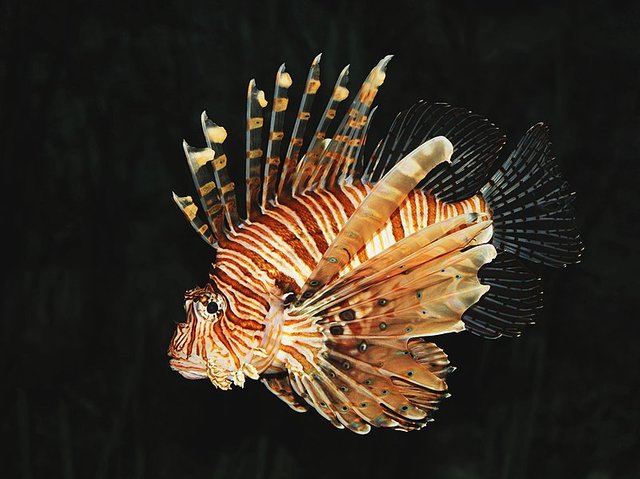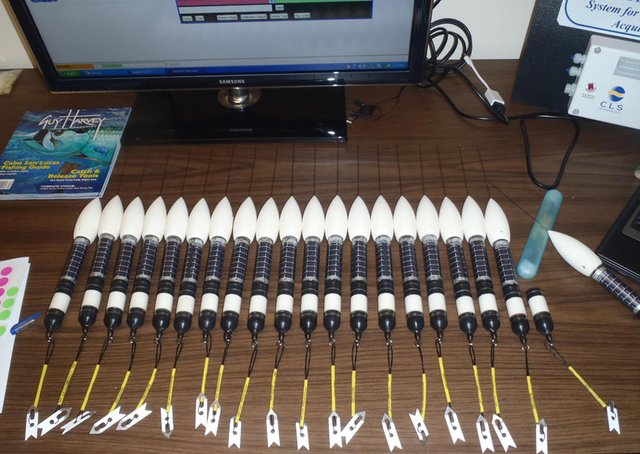Fish Marking Techniques
Fish Marking
The process of marking fishes in any way is called marking. But in the definition of fisheries technology, marking is the process of drawing a hole in any part of the body of a fish by cutting a hole or by cutting a special part of a fish. In common, all fish that cannot be tagged are identified. The identification process is complex and many harmful characteristics are observed. In this method, the part marked on the fish is sometimes inconsistent and can be returned to the researcher for the unsuccessful procedures. Some small fish cannot be identified. Besides, this method is time-consuming.
The technique of fish marking
If a fish is identified in a special process, it is easier to identify the fish. It does not influence the growth, reproduction, etc. of the fish. But so far no such permanent and convenient method has been discovered. However, identification methods have been discovered, that will temporarily work for a certain period. Fish can be identified by using different techniques.
| No. | Techniques |
|---|---|
| 1 | Fin clipping |
| 2 | The Method of Perforation of Operculum & fin |
| 3 | Tattooing |
| 4 | Branding |
| 5 | Subcutaneous Injection |
1. Fin clipping
In this method, the fish is identified by cutting the fins of the fish, so this method is called Fin clipping. This method of identifying fish is easy and hassle-free. The fin clipping method does not require much equipment to identify the fish. Cut fins regenerate in a very short time. It is possible to identify fish even if they are reborn. Of the fish whose fins regenerate faster, young ones are more likely to regenerate than adults in thorny fish. Again, the regeneration of the odd fins is more in the fish with hibiscus. Cutting the adipose fins of salmon does not damage the corners of the fish. When Tilapia mossambica fins are cut, they regenerate within a month. They are recognizable even though the fins are regenerated because the branching of the rays of the regenerated fins does not occur naturally. If it is a big fish, you have to use both scissors to cut the fins. On the other hand, young fish have to use eye scissors.
2. The method of perforation of operculum and fin
The method of perforation of fins and concoctions by metal equipment in the corners is called perforation of concoctions and fins. In this method, a perforation is made in the conch and fins with a metal object or rod. However, after a long term, these holes are closed. However, even if the hole is closed, its stain remains. Petersen was the first to use the method of piercing the conch and fins. He uses this method in Plaice fish.
3. Tattooing
The process of artificially cutting or marking tattoos under the skin of a fish is called tattooing. The method of cutting tattoos is to make numbers, spots, codes or letters by colouring under the skin of the fish with the help of needles. The work can be done by hand or instrument. However, it takes a long time to do it by hand. In this way, the fish usually lasts up to three months. This method is not suitable for fish with large scales.
4. Branding
If any fish is marked with something hot or cold, that method is called Branding. The fish is scorched by heating the metal rods or by making them very cold. Fish can be identified for up to a few months. However, in this process, more damage can be done. If the liquid nitrogen is cooled and boiled, the fish does not suffer much damage. The success of the staining mark depends on the temperature of the instrument used and the size of the instrument and the usage. The disadvantage of this process is that the stain is not immediately evident, so it is not immediately understood. At present, serial numbers or individual numbers are given by the laser beam method without touching the fish. This method is quite risky. A slight variation in laser beam application can lead to fish death. At present, the use of the silver nitrate pencil method is increasing. This method can be done by heating the electric heating micron. Cold ethanol, dry ice, and cold liquid nitrogen can be added to the metal bar to cool and strain the fish.
5. Subcutaneous Injection
(i) Use of colours: Different types of colours will be used for this purpose. However, very few have brought success. Acrylic paints Acrylic colour Mercuric sulfide and Hydrated Chromium Oxide are effective for one to two years. It is easily seen by injecting empty tut under the fish bath.
(ii) Injection with liquid latex: The first liquid latex is used to identify the fish. Liquid latex is applied to different parts of the body of the fish. Latex in catatonic fish lasts up to three years. Latex is also effective in place fish. Latex, on the other hand, is ineffective in the case of rainbow trout. A syringe with a capacity of 5 ml is required to cover the liquid body of the fish. However, this latex freezes inside the syringe. That's why lubricant has to be used in the syringe.
(iii) Vital Stains: Very young fish can be identified by dipping them in dye or by mixing dye with food. Good results can also be obtained by using Bismark Brown. Bismark Brown lasts up to four days. Acridine orange is used in certain doses to get good results. This colour lasts up to fourteen days. Arnold's idea is that the method of marking the pen by dipping it in paint is acceptable in a short time. Bagenal egg producer Salmo trutta has been found to mix Sudan Black with food, which makes their eggs darker in colour and lasts for six weeks in the pan after they start grabbing this colour.
(iv) Fluorescent materials: Fluorescent materials have been inserted under the skin of fish with a tattooing device and it has been observed that such products can last up to 9 months. If luminous colour can be used in Colo salmon with Melamine Salphonamide Formaldehyde Resin, its durability is increased up to two years. With the luminous properties of the drug tetracycline, oxytetracycline can be used in fish identification. Ultraviolet ray instruments are needed for luminous sign detection. The use of such instruments at the field level is inconvenient.
(V) Radioactive solution: Deep Injection Techniques; Hasler & Faber first used this method to identify fish. Carbohydrate carriers like the radioactive suspension inserted into the peritoneum with a thorium dioxide syringe. Such products remain in the body of the fish for life. However, X-ray devices are needed to detect them. Its use in the field is not possible. Good results have been obtained by injecting lead acetate into the body of the fish. Lead acetate creates a time mark in fish scales. A chemical is to be used at the rate of 50 mg/kg body weight.
- Advantages of marking:
(i) Marking is used in the case of group fish.
(ii) This method can be applied to any fish.
(iii) Different types of fish data can be collected in groups.
(iv) This method helps in research.
(v) The cost is less in this method.
- Disadvantages of marking:
(i) There is a possibility of physical damage to the fish.
(ii) It is not possible to send it back to the researcher.
(iii) This method cannot be implemented quickly.
(iv) It is often not possible to identify the fish species.
(v) Caution is to be exercised in the case of penny fish.
| Reference - Fish Biology, Aquaculture Nutrition and Population Dynamics |
|---|

.jpg)

Upvoted! Thank you for supporting witness @jswit.

Please check my new project, STEEM.NFT. Thank you!
Note: You must enter the tag #fintech among the first 4 tags for your post to be reviewed.